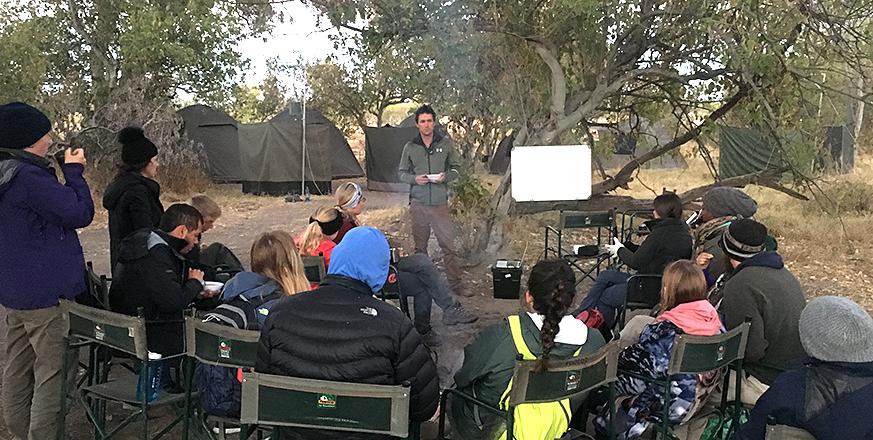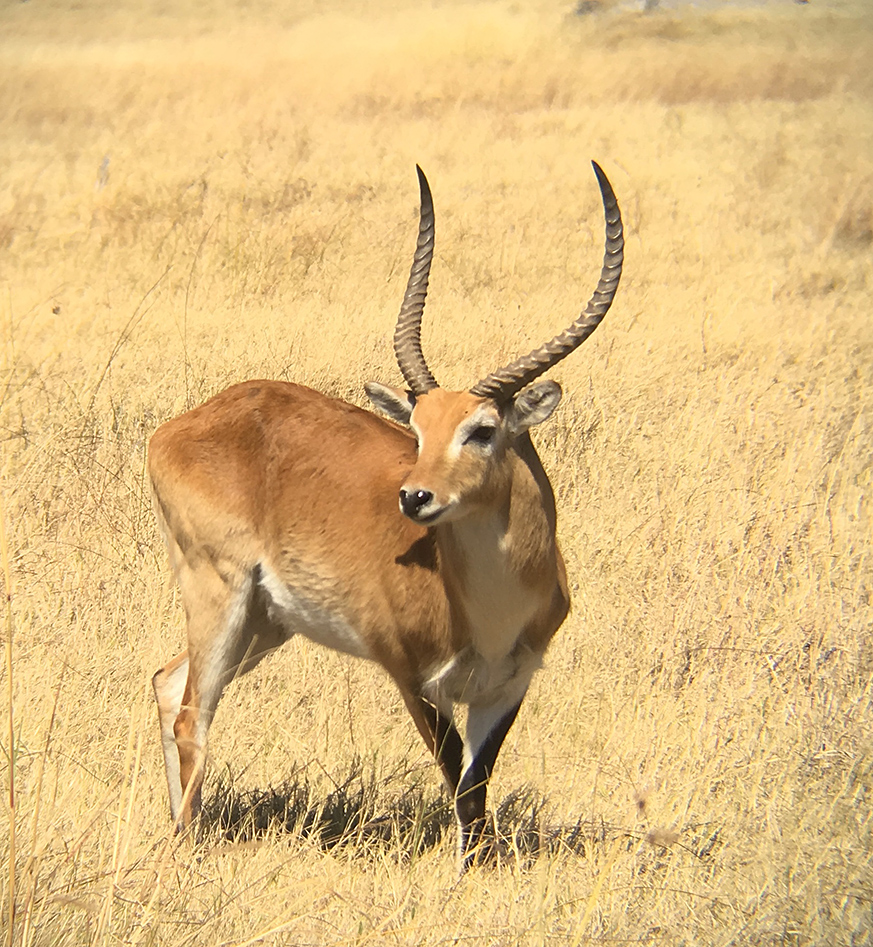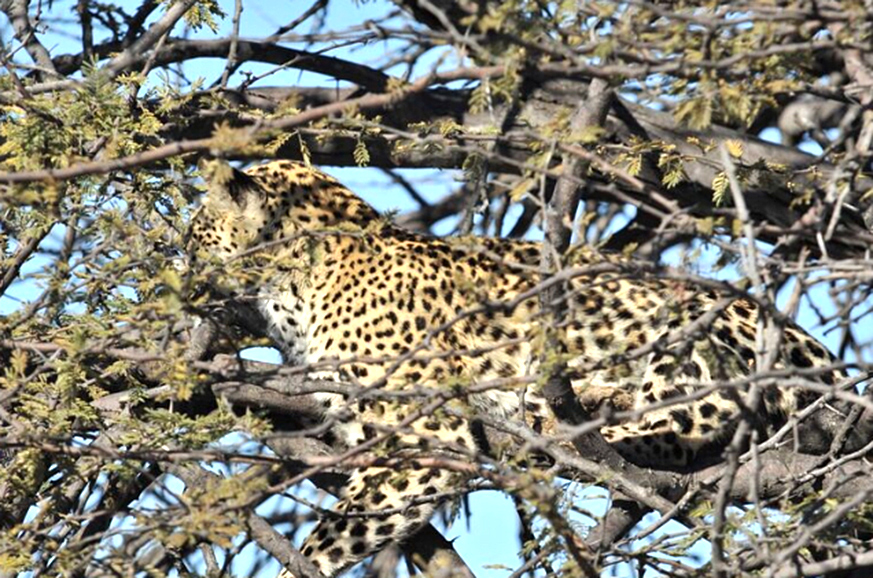Notes from the Field: Anna Seweryniak - Incredible Wildlife, Complex Issues

After an incredible first night in Moremi Game Reserve and a stunning eclipse, we all had some time to “sleep in” this morning. Our day began at a crisp 6am with the beautiful sound of hippos grunting and our ever-exciting “good morning” call. Right off the bat, we gathered around the fire with a cup of coffee for a lesson on herbivore transects. The purpose of a herbivore transect is to record and analyze species diversity and occupancy within a defined area. In order to conduct an accurate transect, we planned to survey an area with the same type of vegetation on each side of our route. We ended up traveling across Mopane Scrub/Woodland and Kalahari Sandveld while observing a variety of herbivores (impalas, waterbucks, warthogs, elephants, and even one steenbok). As a team, the undergrads recorded the GPS location and distance of these species, while also counting and identifying each animal according to gender and age. After covering 12.6 km via safari vehicle and observing 65 animals, we stopped for tea by the water where we were joined by several crocodiles and a hippo (weird how that becomes normal here). Around this time, the Stanford group was busy searching for game across the reserve where they were successful in spotting the first leopard of our trip!

During lunch, we discussed the effects of hunting bans in Botswana and potential solutions to the human-wildlife conflict. Not surprisingly, we were all rather stumped. A major topic of discussion was technology and education. In the past, many organizations have come to Botswana and other countries in Africa with “gifts” intended to aid local communities. What many organizations have failed to realize is that technology can only go as far as the people using it allow—meaning, if there is not an adequate and specific type of knowledge on the equipment and subject, these gifts render themselves pretty useless. One of our beloved guides, Mothusi, recalled a recent instance where a Botswana village was given a bus to use as transportation to/from schools. The problem arose when the bus broke down and there were no mechanics to fix it. Though the issue extends well beyond buses, this particular scenario really put things into perspective. Something we all agreed on is that corruption can worsen living conditions wherever it occurs, including in Africa. In Botswana, elected officials are responsible for the well-being of the people, so it is important that community trusts do not fail to distribute money where it is due. Yet, though tourism is the second leading source of income to the country, many still have not seen its benefits and are struggling to preserve their culture and lifestyle.

It is important to realize that, as Americans, the main thing we can do to help the current situation in Botswana is share our story in a positive light. As Vered (Stanford professor in the English Department) said, no great change has come without understanding people and culture. Simon also brought up an interesting point during our discussion: studies have been conducted in Canada and India that explore the effects of giving hard cash to farmers and other civilians living below the poverty line. It turns out that many of the test subjects, once given the necessary amount of money to meet a comfortable living standard for several consecutive months, were able to pull themselves out of poverty by investing in education, business, etc. Perhaps it wouldn’t be such a bad idea to incorporate a similar plan in Botswana, or perhaps establish some form of free-trade tourism. One thing is for sure, there is no clear cut solution to the human-wildlife conflict and if there is to be any progress made on the issue, it will need to come from a multidisciplinary approach.
 Anna Seweryniak is a University of Illinois undergraduate
Anna Seweryniak is a University of Illinois undergraduate



